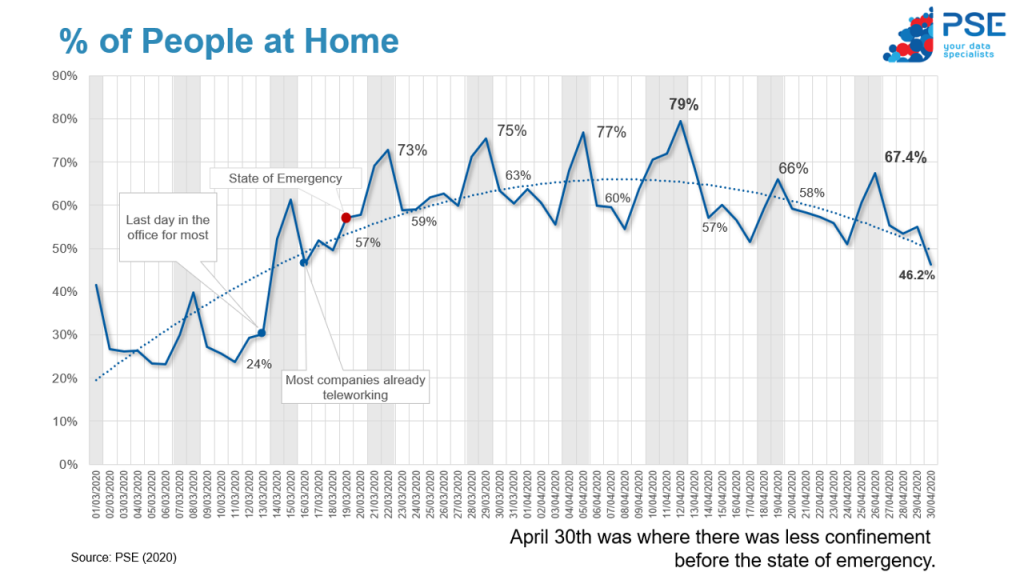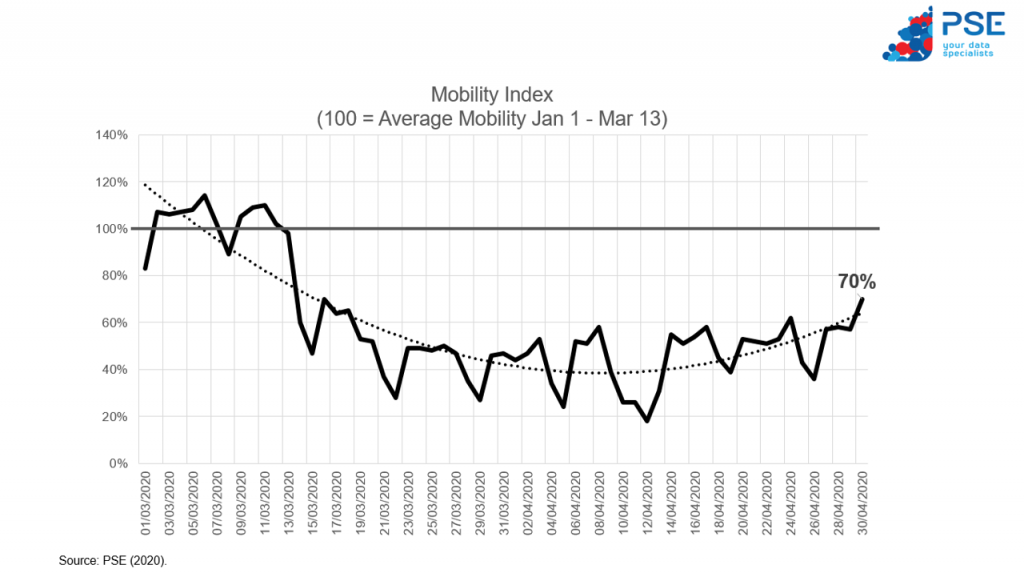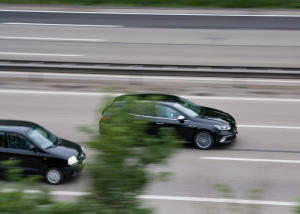The Confinement presented the lowest value ever in pandemic on April 30, where the most Portuguese (54%) went to the street. 31% made medium-long courses. And 71% of those who had active mobility before pandemic, left home.
The consultancy PSE studies the mobility of the Portuguese, continuously. This study is a panel that implies an APP installed on the mobile phones of the participating sample. Thus, the actual movement of the population is monitored 24 hours a day. This study is highly rigorous because it records the location via GPS and concomitantly because it is based on a statistically representative sample of the universe under study. Technical note at the end.
The Total Confinement of the Portuguese, at home, can be decomposed between what is the Natural Confinement (who usually does not leave the house) and the Additional Confinement, made by the people who usually leave the house, but who are now at home.
TOTAL CONFINEMENT AT HOME

April 30 was the day with the least confinement since March 16, that is, the date before the declaration of the state of emergency.
As a result, the MOBILITY INDEX rose as can be seen in the following graph:

What is Natural Confinement?
There is a part of the population that, even before the pandemic, already had a tendency to stay at home, on any given day. We call this “Natural Confinement”. In the period of working days between 1 January and 13 March 2020, on average, about 24.7% of the population was naturally confined to the home.
On Thursdays, considering only the beginning of 2020 prior to the pandemic, Natural Confinement was 24.2%. Now we see that the Additional Confinement, in particular on April 30, was 21.9%. Or that it results in 46% in total Confinement at Home.
In short, on the average of 2020 before the pandemic, on Wednesdays, 75% of the population is mobile. Of this population that was normally on the move, 71% did not comply with the confinement, this past Thursday.
Evolution of Additional Confinement
On average, about 75% of the population, before the pandemic, had daily mobility needs. If we consider only this group of people, we can see the percentage of this group that now fulfils a “Confinement (Additional) at Home”, in the following graph.

In other words, of the population that has regular mobility needs, only 29% completed Confinamento em Casa on April 30, 2020.
PSE CONTACT:
info@pse.pt
NOTE: This study produces since 2019 data that are applied, above all, in the measurement of audience in outdoor advertising, to assist city councils in spatial planning and in the management of mobility and transport, and also in behavioral studies of mobility and shopper ”, For other companies and entities.
TECHNICAL NOTE: This study is the PSE panel, with continuous data collection through location monitoring and means of travel via mobile application of a panel of representative individuals from the Universe over 15 years old, residing in the regions of Greater Porto, Grande Lisbon, North Coast, Central Coast and Faro District. This study implies an APP installed on the mobile phones of the participating sample. So we monitor the actual displacement of the population, at each hour of the day. This study is carried out 24 hours a day. The data are obtained rigorously, via GPS and with the consent of the monitored sample. For a universe of 6,996,113 individuals residing in the studied regions, the margin of error attributable to the study is 1.62% for a 95% confidence interval.




